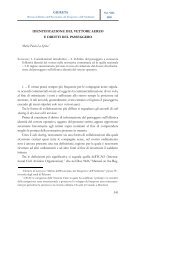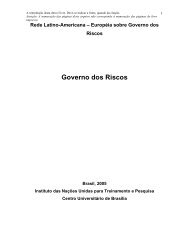Rome II and Tort Conflicts: A Missed Opportunity Abstract Contents
Rome II and Tort Conflicts: A Missed Opportunity Abstract Contents
Rome II and Tort Conflicts: A Missed Opportunity Abstract Contents
Create successful ePaper yourself
Turn your PDF publications into a flip-book with our unique Google optimized e-Paper software.
SYMEON C. SYMEONIDES ROME <strong>II</strong> AND TORT CONFLICTS<br />
codifications, thus underscoring the fact that law reform is far more difficult at the<br />
multinational than the national level.<br />
A. Before <strong>Rome</strong> <strong>II</strong><br />
<strong>II</strong>. HISTORY<br />
In recent European history, the first effort to codify choice of law for torts at<br />
a multinational level was the Benelux Uniform Law on Private International Law of<br />
14<br />
1969, which was based on work that began as early as 1951. Although it never<br />
entered into force, the Uniform Law was surprisingly modern for its day. Its basic<br />
rule for tort conflicts was to apply the law of the place of tortious conduct, but subject<br />
to a wisely drafted escape clause. The escape provided that, “if the consequences of<br />
a wrongful act belong to the legal sphere of a country other than the one where the<br />
act took place, the obligations which result therefrom shall be determined by the law<br />
15<br />
of that other country.” This escape was phrased broadly enough to cover not only<br />
cross-border torts in which the consequences of conduct in one country are felt in<br />
another country, the country of injury, but also cases such as the one in the famous<br />
16<br />
New York case Babcock v. Jackson, namely intra-state torts in which both parties<br />
are domiciled in another country (common-domicile cases). We shall return to this<br />
point later.<br />
The next major effort took place in 1967, in the context of the then European<br />
Economic Community. By 1972, this effort produced the E.E.C. Draft Convention<br />
17<br />
on Contractual <strong>and</strong> Noncontractual Obligations. Its main provision on tort conflicts<br />
also adopted the place of conduct rule, but was accompanied by a more elaborate,<br />
two-prong escape:<br />
[I]f, on the one h<strong>and</strong>, no significant link exists between the situation<br />
resulting from the event which caused the damage <strong>and</strong> the State in<br />
which the event occurred <strong>and</strong> if, on the other h<strong>and</strong>, such situation has<br />
a predominant connection (connexion prépondérante) with another<br />
14. See Kurt H. Nadelmann, The Benelux Uniform Law on Private International Law, 18<br />
AM.J.COMP.L. 406 (1970). An English translation of the Uniform Law is reproduced id. at 420-<br />
425.<br />
15. BENELUX UNIFORM LAW, Art. 14 (emphasis added).<br />
16. 191 N.E.2d 279 (N.Y. 1963). Babcock applied New York law to a suit by a New York guestpassenger<br />
against her New York host-driver <strong>and</strong> his insurer for injury sustained in a traffic<br />
accident in Ontario, during a short trip there. Ontario’s guest-statute prohibited the suit, while<br />
New York law allowed it.<br />
17. For an English translation of the Draft Convention, see 21AM. J. COMP. L. 587 (1973). For<br />
discussion, see Kurt H. Nadelmann, Impressionism <strong>and</strong> Unification of Law: The EEC Draft<br />
Convention on the Law Applicable to Contractual <strong>and</strong> Non-Contractual Obligations, 24 AM.<br />
J. COMP. L. 1 (1976).<br />
56 AMERICAN JOURNAL OF COMPARATIVE LAW (2008) PAGE 4 OF 46



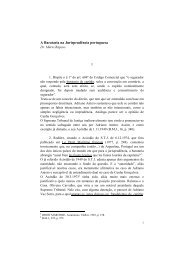

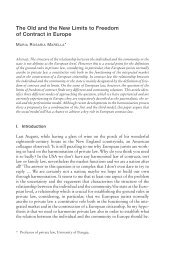

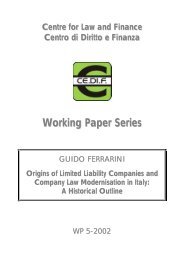
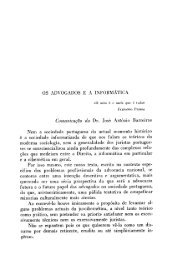
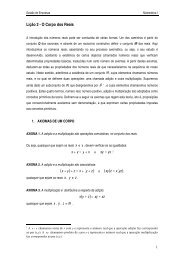

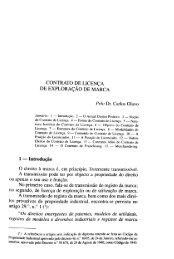
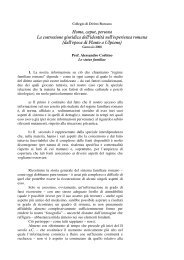
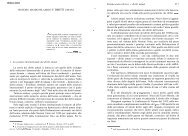

![Luigi Sapio Nozione di islām La parola “islām” [ ] è il mas.dar1 ...](https://img.yumpu.com/15836073/1/185x260/luigi-sapio-nozione-di-islam-la-parola-islam-e-il-masdar1-.jpg?quality=85)
